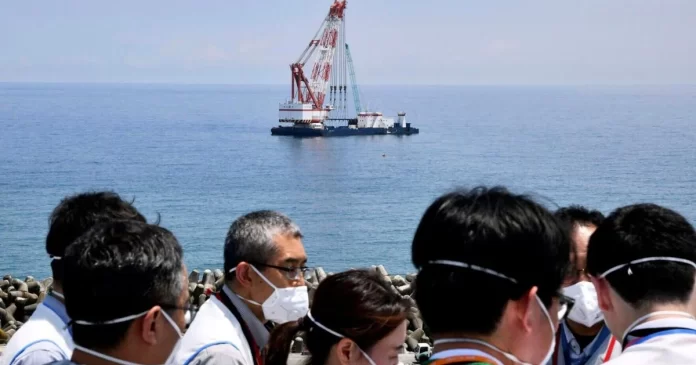Japan’s proposal to release treated wastewater from the damaged Fukushima nuclear plant into the Pacific Ocean has ignited widespread anxiety and anger both at home and abroad. The plan, which involves gradually discharging over a million tonnes of treated wastewater into the ocean, has faced significant opposition from local communities, fishing and seafood industry groups, and neighboring countries such as China and South Korea. Despite the endorsement of the plan by the International Atomic Energy Agency (IAEA), critics argue that it poses potential risks to the environment and human health.
The Plan and Treatment Process
Since the 2011 tsunami caused severe damage to the Fukushima nuclear plant, the Tokyo Electric Power Company (Tepco) has been using water to cool down the plant’s fuel rods, resulting in the production of contaminated water. Currently, more than 1,000 tanks hold this wastewater, and Japan considers this storage solution unsustainable in the long term. Japan’s proposed solution involves gradually releasing the treated wastewater into the Pacific Ocean over the next 30 years.
Tepco treats the Fukushima water using its Advanced Liquid Processing System (ALPS), which effectively reduces most radioactive substances to acceptable safety standards, excluding tritium and carbon-14. These substances, which are forms of hydrogen and carbon respectively, are challenging to separate from water. Although they emit low levels of radiation, excessive consumption can pose risks.
The filtered water undergoes additional treatment and is then diluted with seawater to further reduce the remaining substance concentrations before being released into the ocean. According to Tepco, the final tritium level of about 1,500 becquerels per liter is significantly below the regulatory requirements for nuclear waste discharge and World Health Organization standards for drinking water. Tepco also claims that the carbon-14 level would meet the established standards. The Japanese government and Tepco have conducted studies to demonstrate that the discharged water would present minimal risks to human and marine life.

Critics’ Concerns
Despite the IAEA’s endorsement, the plan has faced opposition from various quarters. UN-appointed human rights experts and environmental activists have voiced their opposition, with organizations like Greenpeace expressing doubts about the effectiveness of Tepco’s treatment process. Critics argue that Japan should continue storing the treated water in tanks to buy time for developing new processing technologies and allowing the remaining radioactivity to naturally decrease.
Some scientists have raised concerns about the potential impact on the ocean bed and marine life, emphasizing the need for further studies. The fear of accidental releases due to past failures by Tepco in preventing the 2011 disaster adds to their apprehension.
International Backlash
Japan’s neighboring countries, particularly China and South Korea, have strongly opposed the plan. China has accused Japan of treating the ocean as a “private sewer” and criticized the IAEA report, labeling it as “one-sided.” South Korea’s public sentiment has been critical as well, with protests and demands for government action against the water release. The South Korean parliament passed a resolution opposing the plan, and officials have launched inspections of seafood imports from Japan and are upholding the existing ban on seafood from regions near the Fukushima plant.
Japan’s Response and International Approval
Japanese authorities and Tepco have made efforts to address concerns by explaining the science behind the treatment process and promising transparency. Japan has also highlighted that other nuclear plants in the region, particularly in China, discharge water with higher levels of tritium. The IAEA report, which endorsed Japan’s plan, provided further support. The report stated that Tepco and Japanese authorities adhere to international safety standards in various aspects related to facilities, inspections, environmental monitoring, and radioactivity assessments.
Japan’s plan to release treated wastewater from the Fukushima nuclear





